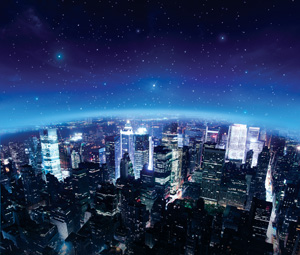Heidi Skolnik ’83, M.S. ’84: Peak Performance
Heidi Skolnik ’83, M.S. ’84: Peak Performance
By Susan Weiner, IC View
During her 25 years as a sports nutrition consultant, Heidi Skolnik has counseled corporate VIPs, the New York Mets, the New York Giants, the New York Knicks, the Juilliard School, and the School of American Ballet on the virtues of nutrition and performance. On any given day, a morning roundtable with NBA athletes and coaches may follow up with a lunchtime lecture at Julliard and a one-on-one evening training session with a New Jersey homemaker.
 “There are some people who want structure, a 9 to 5. My schedule and destination are different every day,” explains Skolnik, a fellow of the American College of Sports Medicine, a certified dietician nutritionist, and president of Nutrition Conditioning, a nutrition consulting practice serving the greater New York Metropolitan area. “That works for me. I get to do consulting, writing, presentations, media interviews, and even sales; it’s part of owning your own business.”
“There are some people who want structure, a 9 to 5. My schedule and destination are different every day,” explains Skolnik, a fellow of the American College of Sports Medicine, a certified dietician nutritionist, and president of Nutrition Conditioning, a nutrition consulting practice serving the greater New York Metropolitan area. “That works for me. I get to do consulting, writing, presentations, media interviews, and even sales; it’s part of owning your own business.”
Pursuing her dreams and public speaking are two of the many life skills Skolnik acquired at IC, where advisors and professors encouraged her to take a hands-on approach to her education. She ultimately fashioned a successful career in the health industry from interdisciplinary Planned Studies courses in holistic health, dance therapy, exercise, and nutrition. “IC really gave me a lot of room to create my reality,” she says.
A public speaking course provided Skolnik with basic oratory skills, and she accepted speaking engagements—some at IC—to get the experience. Opportunities arose from people who heard her talk. Now a sought-after speaker and an advisor to Men’s Health magazine, Skolnik travels the world giving lectures and has appeared on the Today Show, Good Morning America, 20/20, and the Food Network channel.
Skolnik co-authored her first book in 2007, The Reverse Diet: Lose Weight by Eating Dinner for Breakfast and Breakfast for Dinner. Her next book, Nutrient Timing for Peak Performance (Human Kinetics), will be released in June 2010.
“I’m very practical, I’m very realistic. I think you can eat healthily without eating perfectly,” says Skolnik. As for her experience at IC, “I didn’t need to have a clear path. IC allowed me to take my passions, put them together, and make them work.”

